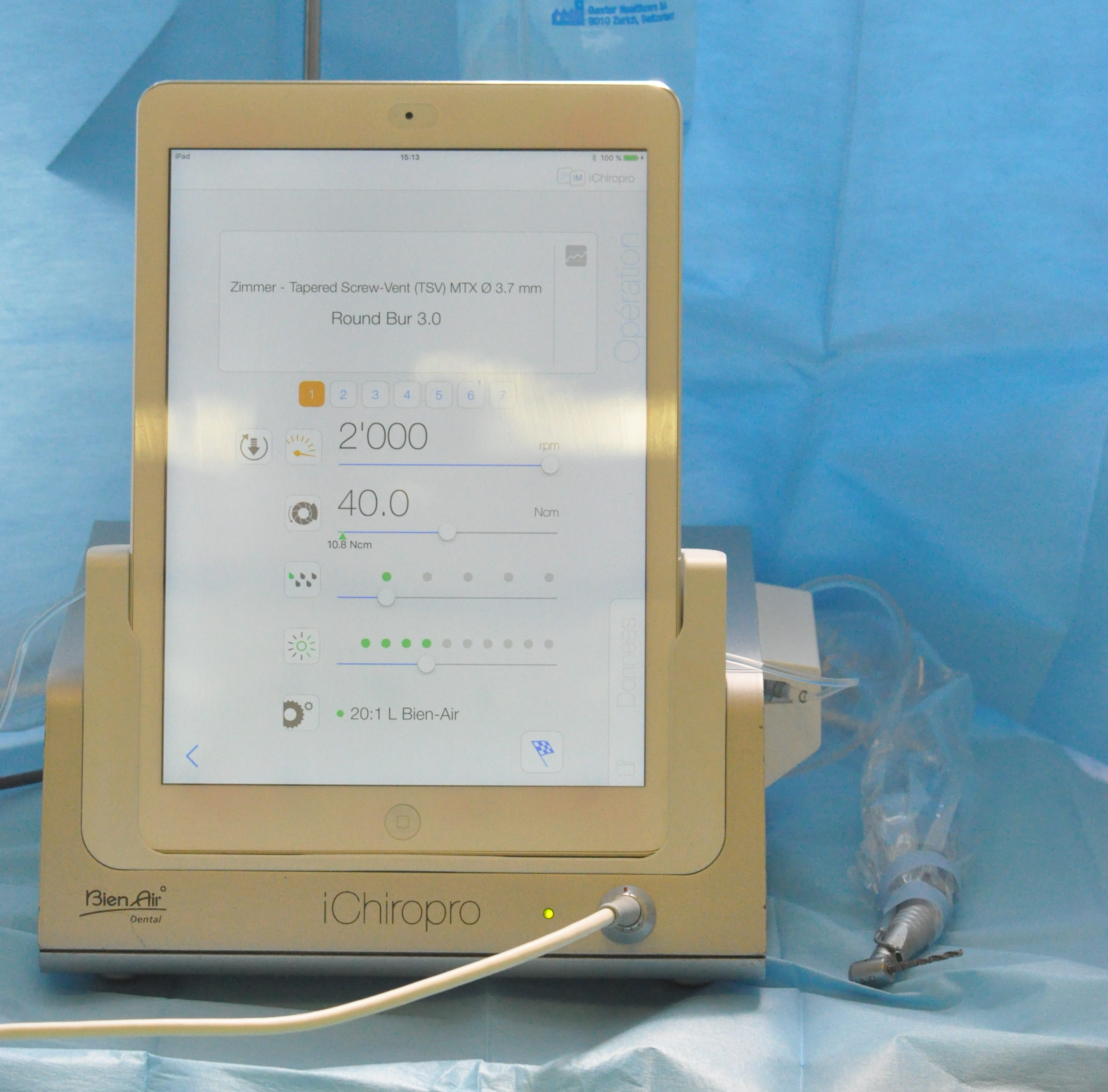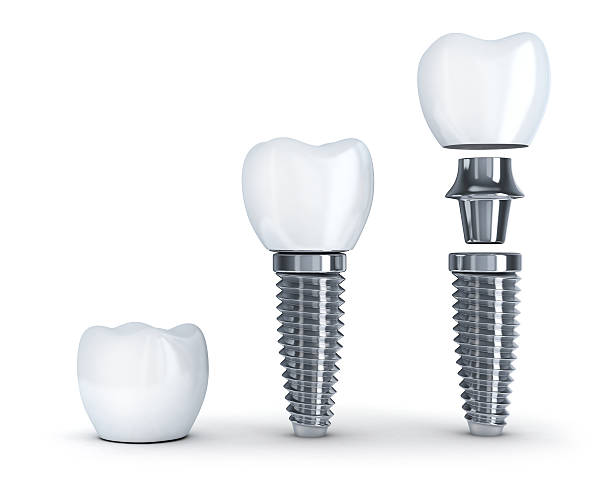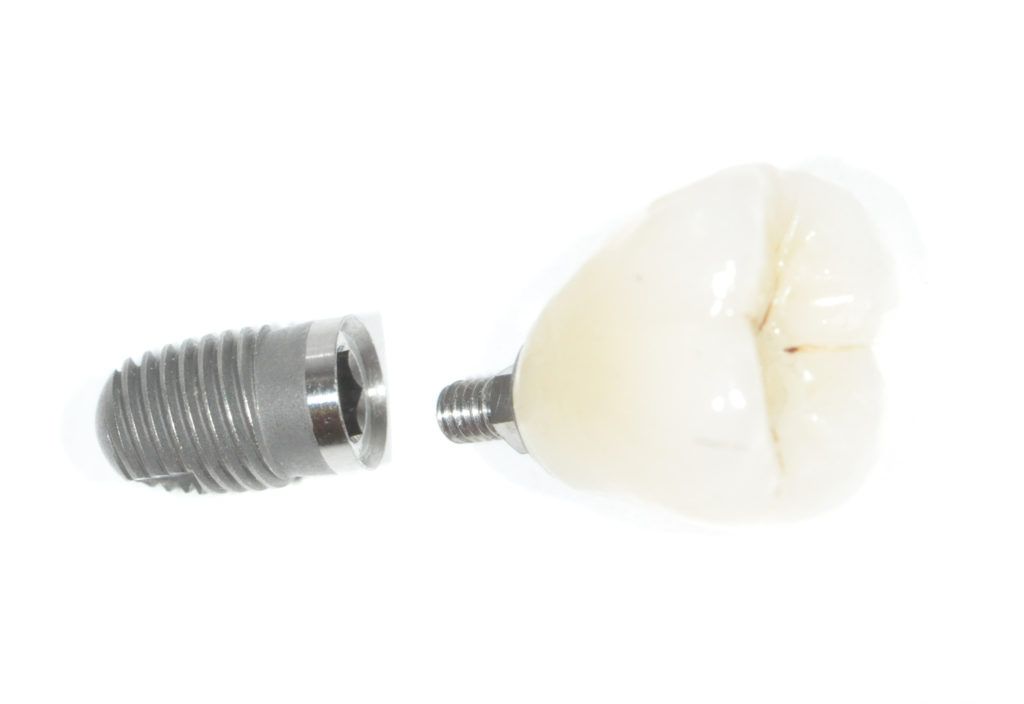Implantology
A dental implant is an artificial root in the form of a titanium screw placed in the jaw bone. It replaces the root or roots of a missing tooth and serves as a support to make a crown, a bridge or to maintain a removable prosthesis.
Dental implants are made of titanium alloy. Titanium is the material of choice in implant surgery because it combines total biological compatibility with excellent mechanical resistance.
Implants began to develop in the mid-1980s. We therefore now have 35 years of experience in implant treatments. Techniques and materials have improved over time. As a result, more and more patients benefit from prostheses on implants.
When is an implant placed?
An implant can be placed either immediately after a tooth extraction or after the bone and gum have healed. The surgery is often simple and painless. It is done under local anesthesia as for the treatment of a cavity. There is, in general, no painful sequel. It is performed in the clinic, by the practitioner himself. The patient can resume normal activity the next day.
The final prosthesis is made after the healing of the bone around the implant (osseointegration) within 2 to 6 months.
During the time of treatment, a temporary prosthesis can be made by the patient’s dentist.
Under certain conditions, a provisional prosthesis fixed directly to the implant can be placed immediately after the placement of the implant.
Conditions
If the bone volume is sufficient, implants can be made in almost all patients. A medical questionnaire and a 3D radiological examination (code beam) confirm the feasibility of the treatment.
If the bone volume is insufficient, and if the patient’s health allows it, there are bone grafting techniques that make it possible to correct the insufficient volume.
Bone grafts
Depending on the area where bone is missing and the type of defect, there are different types of bone grafts.
The sinus filling allows to find the bone volume of the upper jaw when the sinus has developed at the level of the space normally occupied by the roots of the premolars and molars. This situation is very common. This involves adding marketed bone at the bottom of the sinus, having previously pushed back the sinus membrane that lines it.
This operation is performed under local anesthesia and is painless. The cheek then swells for several days and there is moderate pain after the operation.
The filling must then ossify for 6 months, and the implants are then placed.
In some cases the implants can be placed in the same session as the sinus filling.
Horizontal and/or vertical grafts are performed on areas where the bone is too narrow and/or too low in height. We can sometimes add bone in the same session as the placement of the implant.
A healing period of 6 to 9 months is necessary.
These operations are performed under local anesthesia; the cheek then swells for several days and there is moderate pain after the operation.
L’entretien
Having a dental implant requires a minimum of maintenance: having good oral hygiene and doing checks and cleaning each year at your practitioner’s.
The risk associated with an implant is the resorption of the bone that holds the implant. This pathology is called peri-implantitis.
When the implant has been placed in good conditions, good hygiene and regular monitoring can in most situations prevent the occurrence of peri-implantitis.
Patients with periodontal disease have a higher risk of peri-implantitis and should be especially careful to follow their maintenance and care sessions.
Benefits
The implant is a solution of choice because it makes it possible to replace one or more teeth without damaging the other teeth, and offers a prosthesis that is both fixed, aesthetic and comfortable.
- Implants have a lifespan of at least ten years.
Opening hours
| Monday – Thursday | 9:30 – 19:00 |
| Friday | 9:30 – 18:30 |
| Some Saturdays | 9:00 – 15:00 |
01 40 53 98 82
HOW TO FIND US ?
100, Avenue de Villiers
75017 Paris





